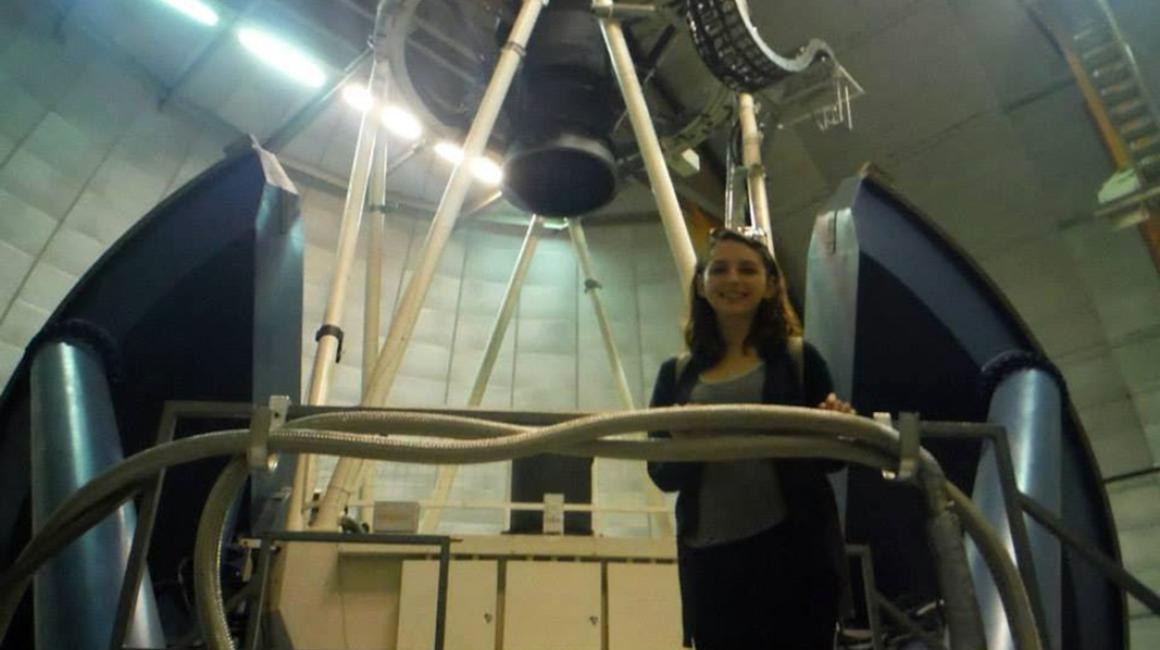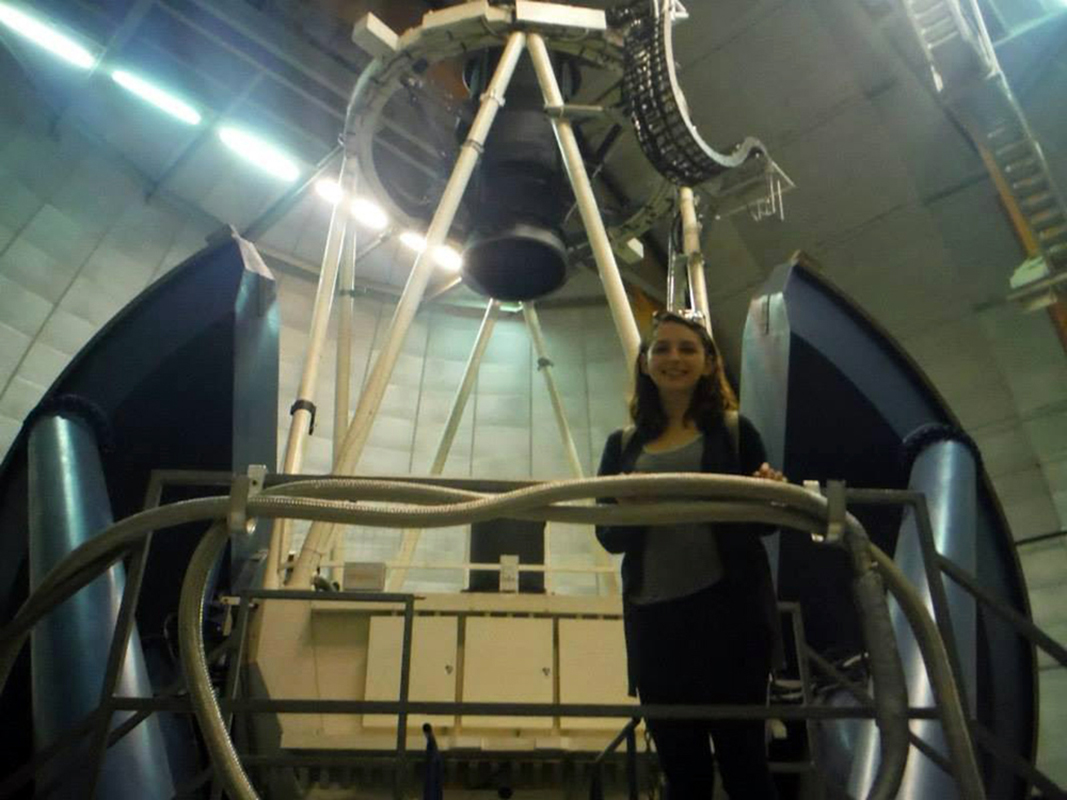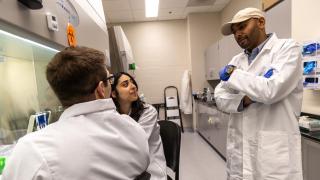
Brittany Howard says one of her favorite pastimes is sitting in her backyard with her dad and looking up at the sky.
“We’ve been looking at the stars as long as I can remember, at least since I was 5,” said Howard, a junior physics major with an astronomy minor. “I was curious about what was up there.”
And now Howard has a better idea of what she was looking at during those stargazing sessions.
“It’s funny because the more I learn, the more questions I have. It seems like there is never enough information,” she said with a laugh.
Howard, who spends her Wednesdays helping out in University of Michigan-Dearborn’s Observatory for public viewing times, said she came to campus unsure of her post-college calling.
That is, until she met Will Clarkson, assistant professor of astronomy.
“I thought about the medical field or physics,” she said. “But then I met Professor Clarkson, and he talked about the joys and wonder of space. He was so excited that it was contagious. It’s something I’ve always really liked, but didn’t know what I could do with that until he got me involved with research. I now know what I want to do—in fact, I have my next 10 years tentatively planned.”
Her goal is to be an astrophysicist. And she’s laying the groundwork now.
Assisting Clarkson and other researchers from institutions like the Harvard-Smithsonian Center for Astrophysics and UCLA, Howard is conducting research on mapping the Milky Way Bulge to gain new insights into the galaxy’s formation history.
“We are hopeful that the map will ultimately unlock some of the deepest mysteries about the formation of our own galaxy, and therefore help us understand galaxy formation throughout the universe,” Clarkson said.
Earlier this year, Howard completed a competitive undergraduate internship to study and conduct research at Chile’s Cerro Tololo Inter-American Observatory (CTIO), a division of the National Optical Astronomical Observatory. She was one of six students selected nationally.
Clarkson said Howard is an excellent example of the kind of research student the university likes to attract.
“She combines a deep interest in the inner workings of the universe with the determination and tenacity necessary to succeed in frontier scientific investigation,” he said. “When applying [for the internship], she had already developed experience in astronomical data analysis through her work with our astronomy research group here at UM-Dearborn.”
While at CTIO, Howard conducted research, participated in weekly group research meetings, attended seminars and colloquia and learned about astronomical instrumentation and telescope design.
She’s since been back to CTIO twice to continue the Milky Way mapping research. The collaboration she has joined has proposed a further set of observations at CTIO, which, if approved, would take place in summer 2016.
“Before the internship, I had never really traveled. But now I’ve been to Chile three times in six months,” said Howard, saying that in Chile the Milky Way is so clear in the sky that it’s used like a compass. “Every time I go, I become more and more sure. These experiences have solidified what I want to do.”
To Howard, the research goes even beyond her personal goals. It’s helping her add to something even bigger.
“What we’re doing with the Milky Way hasn’t been done before. Thanks to Professor Clarkson, I’m contributing to the base of human knowledge. That’s a pretty amazing feeling.”
And, for those stargazing nights, Howard said she hopes to one day have her dad get out of the backyard and travel with her to Chile.
“It’s absolutely breathtaking,” she said of the Chilean clear nights. “I really want him to see it too. I know we’ll both just stare at the sky for hours.”Brittany Howard has traveled to Cerro Tololo Inter-American Observatory in Chile several times to do research and help map the Milky Way. Behind her is a Blanco 4m Telescope with a Dark Energy Camera (DECam) attachment.






